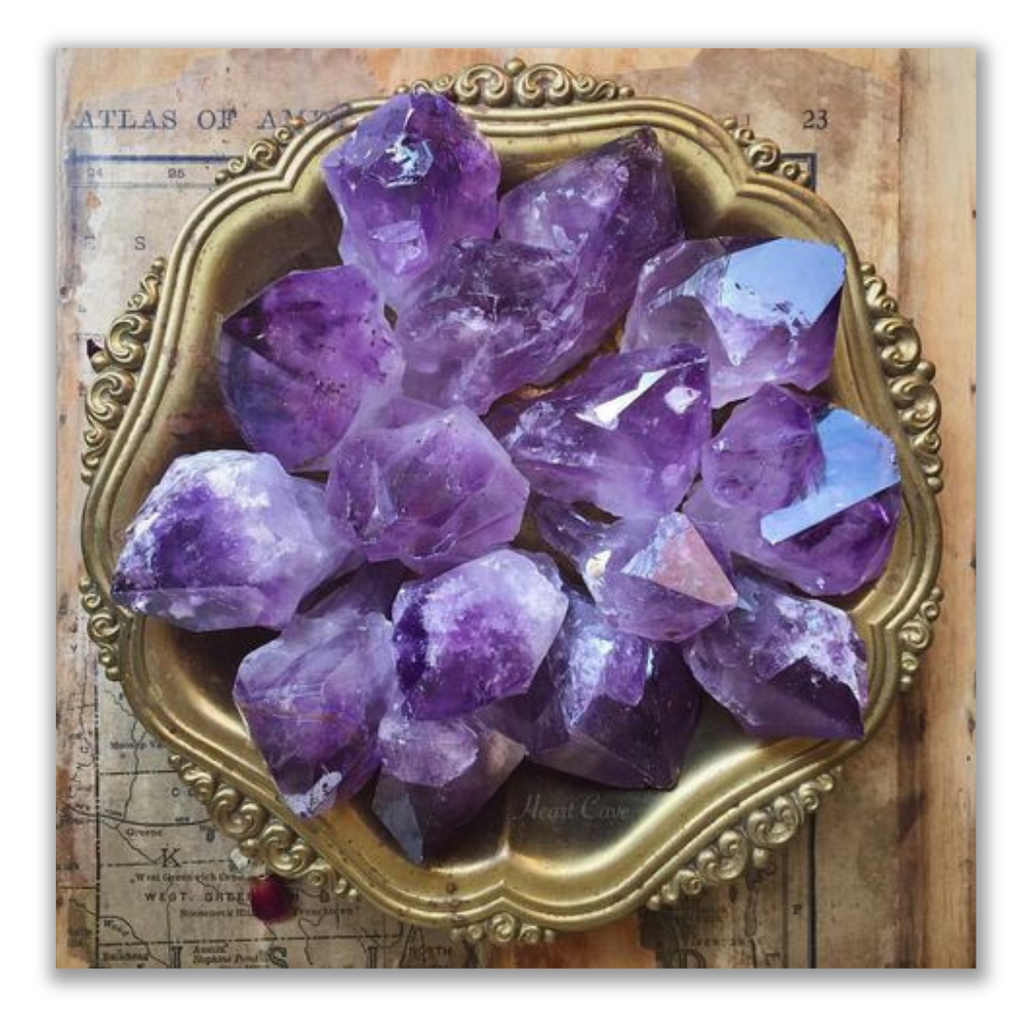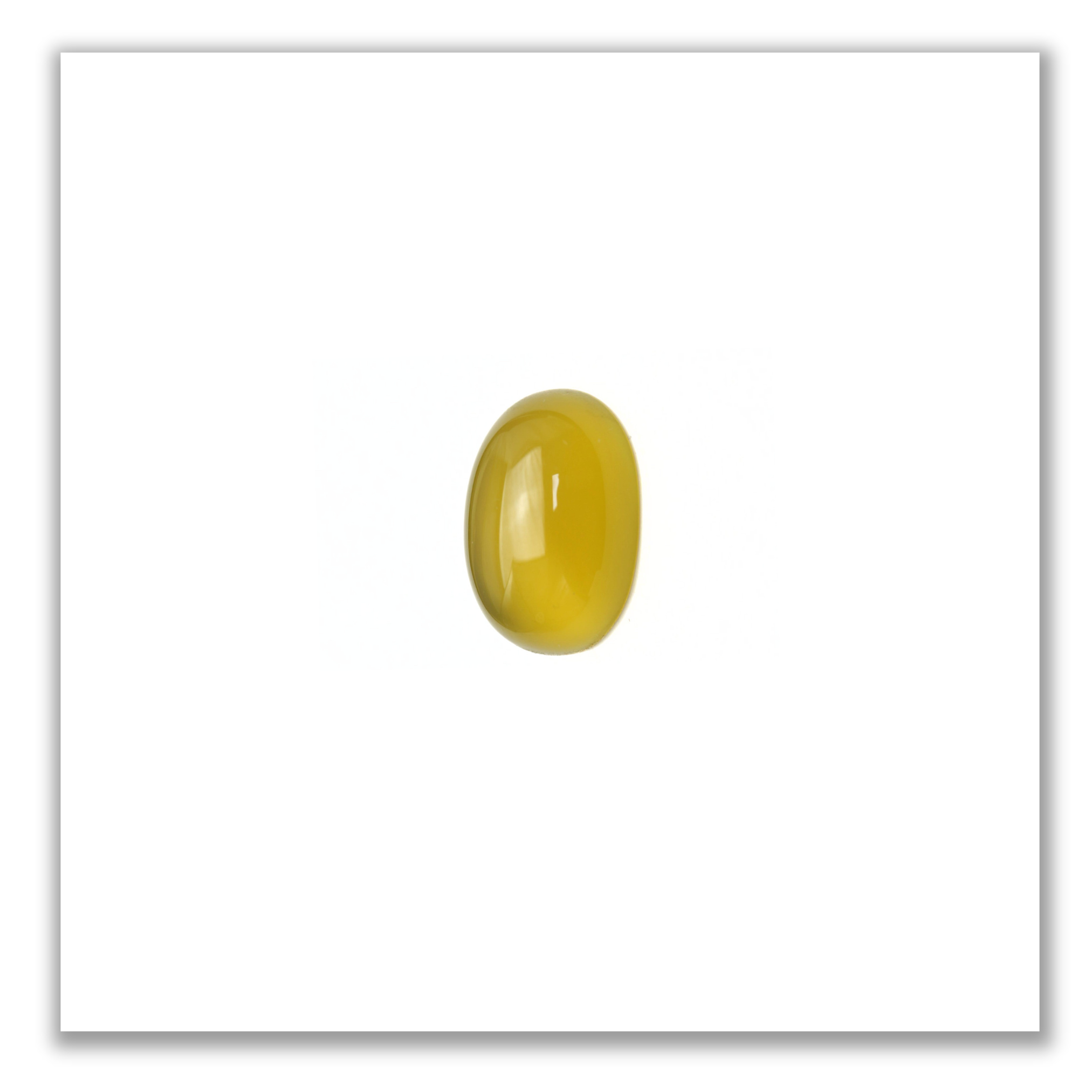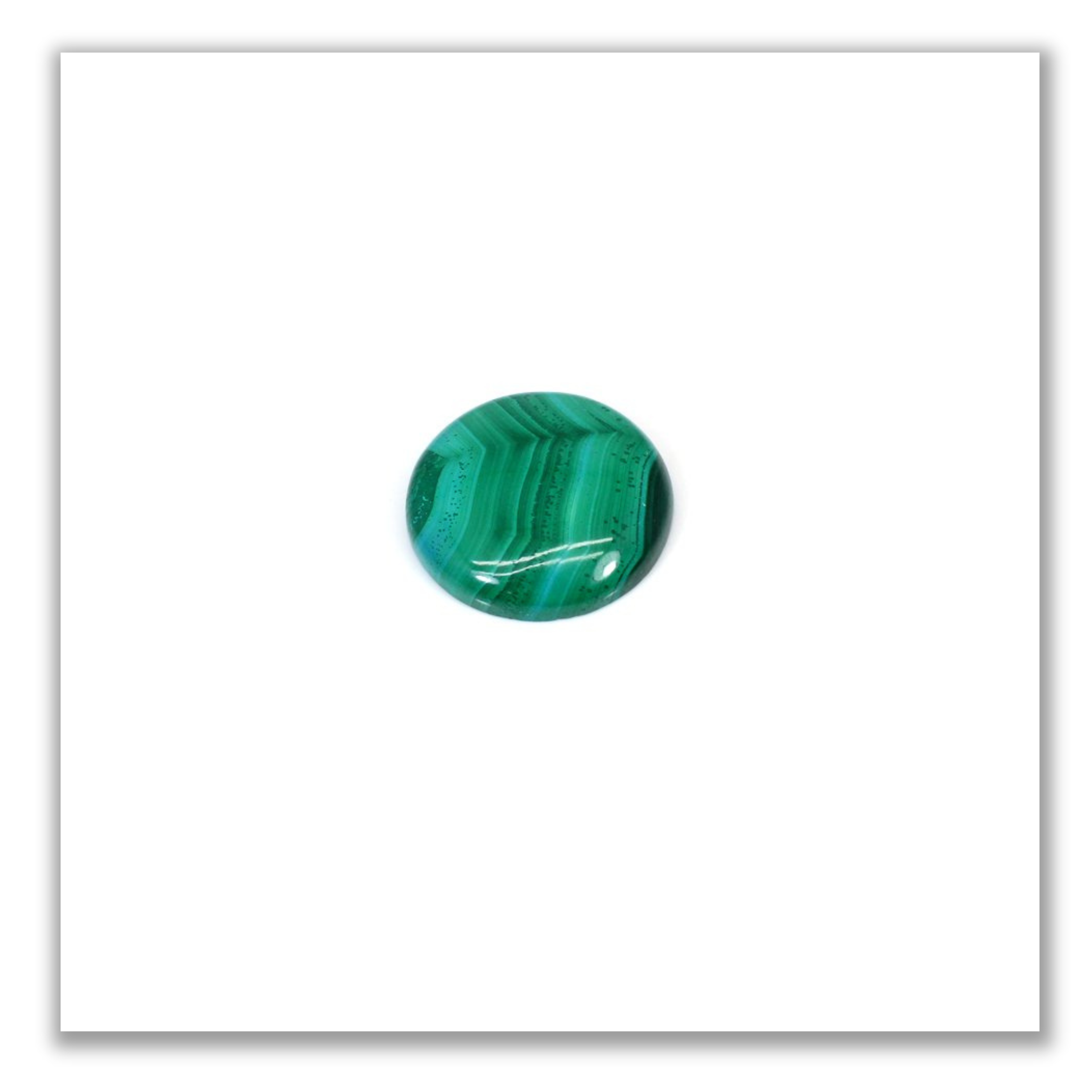Unveiling the Royal Purple Gem

Introduction to Amethyst:
Amethyst, with its regal purple hue, is a captivating gemstone that has been treasured throughout history for its beauty and spiritual significance. This section introduces amethyst, describing its color variations, historical prominence, and the allure that has made it a cherished gemstone worldwide.

Geological Origins and Formation of Amethyst:

Amethyst, renowned for its captivating purple hue, owes its existence to intricate geological processes that unfold deep within the Earth's crust. This section delves into the fascinating origins and formation of amethyst, uncovering the geological marvels that create this lavish purple treasure.
1. Quartz and Its Abundance: Amethyst is a variety of quartz, a mineral abundant in the Earth's crust. Quartz is composed of silicon and oxygen atoms arranged in a repeating crystalline structure. It is one of the most common minerals found on Earth, occurring in various forms and colors across diverse geological settings.
2. Silicon-Rich Solutions: The genesis of amethyst begins in environments with volcanic and metamorphic activity. In such settings, hydrothermal processes lead to the formation of silicon-rich solutions. These solutions carry dissolved silica (silicon dioxide) derived from rocks and minerals in the Earth's crust.
3. Filling the Cavities: As volcanic and metamorphic rocks cool and solidify, cavities or voids may form within them. These cavities can result from gas bubbles trapped in the rock during its formation or from the dissolution of minerals over time. These hollow spaces become natural molds for mineral deposition.
4. Precipitation and Crystal Growth: The silicon-rich solutions infiltrate these cavities and begin to cool. As the temperature decreases, the solutions become supersaturated with silica, causing the mineral to precipitate out of the solution. Over time, the silica crystallizes and forms distinct quartz crystals within the cavities.
5. The Role of Iron Impurities: What sets amethyst apart from other varieties of quartz is its striking purple color. The presence of iron impurities within the silica solution is responsible for this regal hue. Traces of iron replace some of the silicon atoms within the quartz crystal lattice, creating the mesmerizing purple coloration.
6. Color Variation:

Amethyst's color can vary from pale lilac to deep violet, depending on the concentration of iron impurities and other trace elements. Lighter shades of amethyst are often referred to as "Rose de France," while darker and more saturated varieties are prized for their intense purple color.
7. Geological Locations: Amethyst is found in various regions worldwide. It is commonly associated with volcanic rocks, such as basalt and rhyolite, as well as with metamorphic rocks, like schist and gneiss. Notable sources of amethyst include Brazil, Uruguay, Zambia, Russia, and Madagascar, among others.
8. Secondary Enrichment: In some cases, amethyst deposits undergo secondary enrichment processes. Over time, the amethyst crystals may be subjected to weathering and erosion, leading to the concentration of amethyst fragments in riverbeds or sedimentary deposits, known as "placer deposits."
9. Gemstone Cutters' Skill: Once amethyst crystals are extracted from their geological homes, gemstone cutters and lapidaries skillfully cut and polish them into the desired shapes, revealing the full beauty and splendor of the gemstone's natural purple allure.

Historical Significance and Cultural Uses:

Amethyst & Gold Stick Pins Heritage Auctions by jewelry.ha.com
Amethyst, with its mesmerizing royal purple hue, has held significant cultural importance and spiritual reverence throughout human history. From ancient civilizations to modern societies, this gemstone has adorned regal crowns, served as a symbol of spirituality, and been cherished for its protective properties. This section unveils the historical journey of amethyst, revealing its multifaceted significance across cultures and time periods.
1. Ancient Civilizations:

Italian Ring with Intaglio of Sabina c_ 1800
Amethyst's historical roots trace back to ancient civilizations, where it was revered for its regal purple color and believed protective properties. In ancient Egypt, amethyst was carved into amulets and used in jewelry as a symbol of protection and good fortune. Egyptians associated the gem with the god Osiris and believed it had strong connections to the afterlife.
2. Greek Mythology and Sobriety Symbolism:

Greek Amethyst Gemstone Ring
In ancient Greece, amethyst's name derived from the Greek word "amethystos," meaning "not drunken." According to Greek mythology, the wine god Dionysus grew angry with mortals and vowed to unleash tigers upon the next person he encountered. Amethyst, a young maiden, was on her way to worship the goddess Diana when she encountered Dionysus. As the tigers approached, Amethyst called out to Diana for help, and the goddess turned her into a pillar of clear quartz to protect her. Dionysus, regretful of his anger, wept tears of wine that stained the quartz purple, giving rise to the gemstone's name and its association with sobriety and protection against intoxication.
3. Symbol of Royalty:

Throughout history, amethyst has been associated with royalty and nobility. In ancient times, it adorned the crowns, scepters, and rings of rulers and monarchs. The gemstone's regal purple color was considered a mark of luxury and power, reserved for those of high status.
4. Spiritual Significance:
Amethyst has long been regarded as a gemstone with spiritual significance. It is associated with enhancing spiritual awareness, intuition, and connection to higher realms. In various cultures, it has been used during meditation and spiritual practices to facilitate a deeper understanding of oneself and the universe.
5. Protective Talisman:
Amethyst's reputation as a protective stone has been carried through the ages. It was believed to safeguard against negative energies, psychic attacks, and physical harm. In medieval times, soldiers wore amulets made of amethyst into battle for protection and courage.
6. Birthstone and Zodiac Stone: Amethyst has been assigned as the birthstone for the month of February and is linked to the zodiac sign of Pisces. It is believed to bring harmony, balance, and spiritual awakening to those born under these astrological influences.
7. Healing and Wellness Properties: In alternative healing practices, amethyst is used for its healing properties, believed to promote emotional balance, stress relief, and mental clarity. It is often associated with the crown chakra, believed to aid in spiritual growth and enlightenment.
8. Modern Uses:

In contemporary times, amethyst remains a popular gemstone for jewelry and decorative art. It is used in various jewelry pieces, such as rings, necklaces, earrings, and pendants, and continues to be treasured for its enchanting color and spiritual symbolism.

Healing and Metaphysical Properties:

Vintage Russian Amethyst and Diamond Brooch
Amethyst, with its captivating royal purple hue, is not only a gem of extraordinary beauty but also a crystal of profound metaphysical significance. For centuries, this gemstone has been revered for its healing properties, believed to foster spiritual awakening, emotional balance, and overall well-being. In this section, we explore the mystical and transformative powers of amethyst as a crystal of enlightenment and inner harmony.
1. Spiritual Awakening and Intuition: Amethyst is renowned for its ability to stimulate spiritual growth and enhance intuitive abilities. It is often referred to as the "Stone of Enlightenment," as it encourages a deeper connection to higher consciousness and spiritual realms. Meditating with amethyst can aid in quieting the mind and attuning oneself to inner wisdom and spiritual guidance.
2. Emotional Balance and Stress Relief: Amethyst's soothing energy is known to promote emotional balance and calmness. It is often used as a crystal for stress relief, helping to alleviate anxiety, fear, and emotional turmoil. By promoting a sense of tranquility, amethyst enables individuals to approach challenges with clarity and composure.
3. Healing and Cleansing: In alternative healing practices, amethyst is considered a powerful crystal for healing and purifying the mind, body, and spirit. It is believed to aid in the release of negative emotions, patterns, and addictions, supporting individuals on their journey of self-discovery and personal growth.
4. Protection and Spiritual Shield: Amethyst is often used as a protective stone, forming a spiritual shield that safeguards against negative energies and psychic attacks. Placing amethyst clusters or geodes in living spaces is believed to create an aura of protection and maintain a harmonious energy flow.
5. Enhanced Intuition and Creativity: By opening and activating the third eye and crown chakras, amethyst is said to amplify intuition and creative inspiration. Artists, writers, and individuals seeking greater clarity in decision-making often turn to amethyst to access higher insights and tap into their innate creativity.
6. Meditation and Deep Sleep: Amethyst's calming energy makes it an ideal companion for meditation and promoting restful sleep. Its presence in the bedroom is believed to help reduce insomnia and enhance dream recall, facilitating a more profound and restorative sleep experience.
7. Crown Chakra Connection: Amethyst is associated with the crown chakra, the energy center at the top of the head that links us to higher consciousness and universal wisdom. Activating and balancing the crown chakra with amethyst is thought to facilitate a deeper understanding of the interconnectedness of all beings.
8. Inner Healing and Self-Discovery: Amethyst's gentle yet transformative energy supports inner healing and self-discovery. It encourages individuals to confront emotional blockages, past traumas, and limiting beliefs, facilitating a path of healing and self-awareness.
9. Connection to Higher Realms: In spiritual practices, amethyst is believed to facilitate communication with spiritual guides, angels, and higher beings. It acts as a conduit for divine energy, enhancing one's receptivity to messages from the spiritual realm.

Amethyst in Jewelry and Decorative Art:

Heritage Auctions by Fineart.ha.com
Amethyst, with its enchanting royal purple hue, is a gemstone that has been revered for centuries in the world of jewelry and decorative art. Its regal beauty and metaphysical properties make it a popular choice for crafting exquisite adornments that captivate the senses and elevate the aesthetic of living spaces. In this section, we delve into the mesmerizing realm of amethyst in jewelry and decorative art, showcasing the creative brilliance of artisans and the enduring allure of this cherished gemstone.
1. Amethyst in Jewelry:

Amethyst has long been favored by jewelry designers for its captivating color and versatility. In rings, amethyst serves as the center stone or is surrounded by diamonds or other gemstones to create a captivating display of contrasting hues. Necklaces and pendants featuring amethyst exude elegance, with the gemstone suspended from delicate chains or intricately designed settings. Earrings adorned with amethyst cabochons or faceted gems complement various styles, from classic to contemporary.
2. Birthstone and Spiritual Jewelry:
As the birthstone for February, amethyst holds a special place in personalized jewelry for those born in this month. Amethyst birthstone jewelry is cherished for its symbolic representation of spirituality, intuition, and inner harmony. It is also a favored gemstone for spiritual and healing jewelry, with designs featuring amethyst beads, pendants, and charms that promote spiritual awakening and emotional balance.
3. Statement Pieces: Amethyst's alluring color and remarkable size variations make it an ideal choice for statement jewelry pieces. Statement rings featuring large, high-quality amethyst gemstones are eye-catching and often become the centerpiece of fashionable ensembles. Bold amethyst necklaces and bracelets exude confidence and elegance, making them stand out in any gathering.
4. Druzy Amethyst: Druzy amethyst, with its sparkling crystal surface, adds a touch of celestial charm to jewelry designs. Druzy amethyst pendants, earrings, and rings capture the essence of a starry night sky, captivating the imagination and inviting wearers to embrace the wonders of the universe.
5. Amethyst in Decorative Art: A Touch of Nature's Splendor Beyond jewelry, amethyst graces decorative art pieces that add a touch of nature's splendor to living spaces. Amethyst geodes and clusters are transformed into stunning decorative objects, showcasing the gemstone's natural allure. Bookends and paperweights made from sliced amethyst geodes add a luxurious touch to libraries and office spaces.
6. Sculptures and Carvings:

Roman Amythyst Carving by christies.com
Talented artisans craft intricate sculptures and carvings from amethyst, revealing its artistic potential. From delicate figurines to elaborate designs, amethyst sculptures showcase the gemstone's versatility as a medium for artistic expression.
7. Interior Decor:
Amethyst's rich purple hues make it a sought-after gemstone for interior decor. Amethyst crystal clusters, framed artworks, and decorative objects add a regal touch to homes, hotels, and spas. Amethyst coasters and tabletops elevate the aesthetic of dining areas with their elegant and natural appeal.
8. Energy and Feng Shui: In Feng Shui practices, amethyst is believed to promote positive energy flow and harmony in living spaces. Placing amethyst clusters or geodes in key areas of the home is thought to invite calmness and balance while warding off negative energies.

Caring for Amethyst:

Amethyst, with its captivating royal purple hue, is a gemstone of timeless beauty. To maintain its luster and allure for generations, proper care is essential. Whether adorning jewelry or decorative art, amethyst requires gentle handling and protection from potentially damaging factors. In this section, we provide practical tips on how to care for amethyst, ensuring that its regal splendor remains as enchanting as ever.
1. Avoid Exposure to Heat and Sunlight: Amethyst is sensitive to prolonged exposure to heat and sunlight, which can cause its color to fade over time. To preserve its brilliance, avoid leaving amethyst jewelry or decorative objects in direct sunlight or placing them near heat sources such as radiators or stovetops.
2. Gentle Cleaning: To clean amethyst jewelry or decorative pieces, use a soft, lint-free cloth or a soft-bristled brush to remove dust and dirt gently. Avoid using harsh chemicals or abrasive cleaning agents, as they can damage the gemstone's surface. Instead, use a mild soap solution or specialized jewelry cleaning solution if necessary.
3. Avoid Exposure to Chemicals: Amethyst is susceptible to damage from harsh chemicals, such as bleach, ammonia, and chlorine. It is essential to remove amethyst jewelry before engaging in household chores or using cleaning agents. Avoid contact with perfumes, lotions, and hairspray, as these substances can dull the gemstone's luster.
4. Storage: When not wearing amethyst jewelry, store it separately from other jewelry to prevent scratches and damage. Use individual soft pouches or lined compartments to keep amethyst pieces safe. Avoid storing amethyst in direct contact with harder gemstones or metals that could potentially scratch or abrade its surface.
5. Protective Settings: If amethyst is set in jewelry, ensure that the setting provides adequate protection for the gemstone. Bezel settings, where the metal encircles the amethyst, offer better protection than prong settings, as they reduce the risk of accidental impacts.
6. Avoid Impact and Pressure: While amethyst is relatively durable, it can still chip or crack if subjected to significant impact or pressure. Take care not to drop amethyst jewelry or decorative objects and avoid placing heavy items on top of them.
7. Professional Inspection and Maintenance: Periodically take amethyst jewelry and decorative objects to a professional jeweler or gemologist for inspection and cleaning. Professionals can check for loose settings, damage, and signs of wear, as well as provide appropriate cleaning and maintenance.
8. Ethical Sourcing: When purchasing amethyst, consider its ethical sourcing and ensure it is obtained through responsible mining practices. Ethically sourced gemstones not only support sustainable practices but also contribute to the welfare of mining communities.
9. Handle With Care: Amethyst is a gemstone of beauty and significance, deserving of gentle handling and care. Treat amethyst jewelry and decorative pieces with love and respect, and they will continue to exude their captivating allure for generations to come.

Ethical Sourcing and Sustainability:

Amethyst Ring By eragem
As the demand for gemstones, including amethyst, continues to rise, the importance of ethical sourcing and sustainability becomes increasingly paramount. Ethical practices in the mining and production of amethyst ensure that the gemstone's allure is not tarnished by environmental harm or exploitation of communities. This section sheds light on the significance of ethical sourcing and sustainability in the world of amethyst, promoting responsible practices that honor nature and empower local communities.
1. Responsible Mining Practices: Ethical sourcing of amethyst begins with responsible mining practices that prioritize environmental conservation and worker welfare. Miners adhere to regulations that protect the surrounding ecosystems, prevent water pollution, and promote reclamation of mining sites after extraction. Minimizing the environmental impact helps preserve the natural beauty of amethyst's geological origins.
2. Community Empowerment: Ethical sourcing goes hand in hand with community empowerment. Responsible mining companies engage with local communities, ensuring their involvement in decision-making processes and sharing the benefits of mining operations. This includes fair wages, access to education and healthcare, and opportunities for economic development beyond the gemstone trade.
3. Supporting Artisanal Miners: In some regions, amethyst is sourced through artisanal mining, where small-scale miners work independently or in cooperatives. Ethical sourcing initiatives support these artisanal miners by providing fair trade practices, access to resources, and educational opportunities, enabling them to improve their livelihoods sustainably.
4. Traceability and Transparency: Ethical sourcing initiatives prioritize traceability and transparency throughout the supply chain. Gemstone companies and retailers that source amethyst responsibly provide information about the origin of the gemstones, ensuring consumers can make informed and conscious choices.
5. Commitment to Environmental Conservation: Ethical sourcing and sustainability practices in the amethyst industry extend beyond mining to encompass the entire supply chain. From cutting and polishing to transportation and packaging, companies adopt eco-friendly measures to minimize their carbon footprint and conserve natural resources.
6. Reclaimed and Recycled Amethyst: Ethical initiatives promote the use of reclaimed and recycled amethyst to reduce the demand for newly mined gemstones. Repurposing amethyst from vintage jewelry or decorative objects not only reduces environmental impact but also adds a unique charm to the final pieces.
7. Ethical Certifications: Several organizations offer ethical certifications that validate responsible sourcing and sustainable practices. Certifications, such as the Responsible Jewelry Council (RJC) and Fair Trade, provide consumers with confidence that their amethyst purchase aligns with ethical standards.
8. Consumer Awareness: Raising consumer awareness about the importance of ethical sourcing and sustainability in the amethyst industry is crucial. Educated consumers can make informed choices and support companies committed to ethical practices, encouraging the industry as a whole to prioritize sustainability.

Conclusion:
In the concluding section, we reflect on the enduring allure of amethyst - from its geological origins to its cultural significance and healing properties. Amethyst's captivating purple hue and spiritual symbolism make it a gemstone of timeless beauty and enduring appeal, cherished for generations to come.











